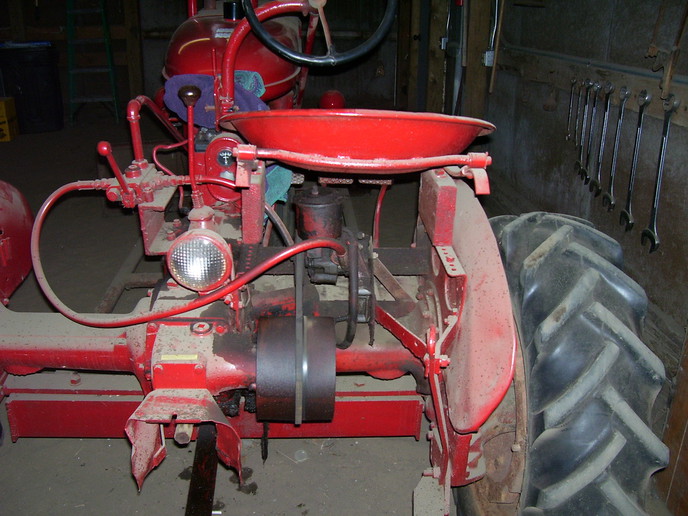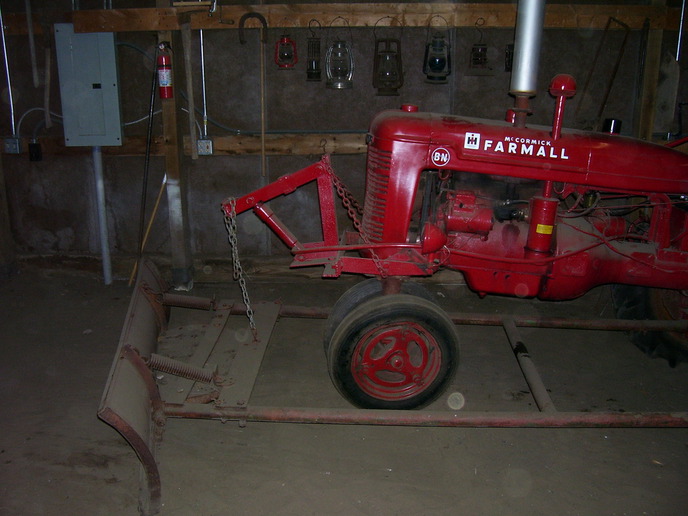chevy_cowboy
Member
Well I bought a '41 B yesterday and brought it home. I've had an H for awhile and know those pretty well, but I don't know much about the A/B's. This one has a few curious things, I'm just wondering if its supposed to be this way or not. Judging by the serial number and casting codes, its a early 1941 tractor.
It has a electric starter and battery.... but no generator, ammeter, lights, or lightswitch box. The seller said before he had to replace the fan, it didn't even have the 2nd belt pulley for the generator. My thinking is this tractor might have originally been a crank start only tractor and someone added the starter and batt... or did they build some like this?
Also it has no temperature gauge. Is that normal or should it have one... if so, where does it mount and where does the sender go into the engine? The oil PSI gauge is mounted down by the oil filter, I assume thats correct, and thats the only gauge it has.
It currently has just plain ol "B" decals on it... but I've seen them with "B Cultivision" decals. How do I know which is correct for this tractor?
It's major oil leak is coming from the hole where the left brake linkage goes into the left axle housing. Once you get it warmed up gear lube nearly streams out of that hole. I've got repro manuals ordered for it, but I'm just wondering how big of a job that will be to fix?
Thanks!
Paul
It has a electric starter and battery.... but no generator, ammeter, lights, or lightswitch box. The seller said before he had to replace the fan, it didn't even have the 2nd belt pulley for the generator. My thinking is this tractor might have originally been a crank start only tractor and someone added the starter and batt... or did they build some like this?
Also it has no temperature gauge. Is that normal or should it have one... if so, where does it mount and where does the sender go into the engine? The oil PSI gauge is mounted down by the oil filter, I assume thats correct, and thats the only gauge it has.
It currently has just plain ol "B" decals on it... but I've seen them with "B Cultivision" decals. How do I know which is correct for this tractor?
It's major oil leak is coming from the hole where the left brake linkage goes into the left axle housing. Once you get it warmed up gear lube nearly streams out of that hole. I've got repro manuals ordered for it, but I'm just wondering how big of a job that will be to fix?
Thanks!
Paul



